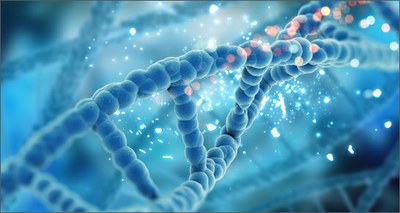Health: Cystic fibrosis, toward personalized therapies thanks to lung microbiome
17/10/2019
 The many challenges faced by personalized medicine in the field of cystic fibrosis, one of the most widespread genetic diseases in the world, mainly affecting the lungs and intestines, were the topic of a review by an ENEA coordinated international research team, published in the international journal "Trends in Molecular Medicine - Cell Press" (https://www.cell.com/trends/molecular-medicine/fulltext/S1471-4914(19)30185-6)
The many challenges faced by personalized medicine in the field of cystic fibrosis, one of the most widespread genetic diseases in the world, mainly affecting the lungs and intestines, were the topic of a review by an ENEA coordinated international research team, published in the international journal "Trends in Molecular Medicine - Cell Press" (https://www.cell.com/trends/molecular-medicine/fulltext/S1471-4914(19)30185-6)
“With this work we have shed light on the progress achieved by science in the study of the microbiome in cystic fibrosis. Knowing its characteristics, genetic makeup and interactions with the single organ will shortly allow to develop increasingly targeted and personalized treatments for the patient, as already done in oncology, where microbiome-based therapies are at an advanced stage ”, Annamaria Bevivino, Head of the ENEA Laboratory for Sustainability, Quality and Safety of Agri-food Production and corresponding author of the review, explained.
In the last decade, Italian and international research have been increasingly oriented toward the study of the large community of microorganisms (bacteria, fungi and viruses) that live in the patient's lung; the goal is to shed light on the changes it undergoes as a result of the progression of the disease, infections, respiratory inflammation and antibiotic therapy. For this type of investigation, a modern DNA sequencing technique (metagenomics) is used, which allows microorganisms to be studied directly in their environment, thus avoiding collection and cultivation in the laboratory.
"So far, this new technique has allowed us to understand the complexity of the respiratory ecosystem and identify new bacterial populations. In a disease like cystic fibrosis, where the condition of the lung plays a key role, it is essential to understand the interactions within lung bacterial communities and their role in worsening respiratory functions” Bevivino pointed out.
For example, the members of the microbiota establish complex microbial interactions (mutualistic, competitive, antagonistic, synergistic) that suggest hypotheses of interventions based on the restoration of beneficial relationships within the community; furthermore, several factors influence the pulmonary microbiota, such as age, mutations in the CFTR gene responsible for the disease, respiratory function and antimicrobial therapy.
"In order to better define the complex relationships among the composition of lung microbial communities, status of the disease and response to antibiotic treatment, the next goal will be the development - through a systems biology approach - of computational models that use information on genes, microbes, metabolites, proteins and living environments to prevent, diagnose and treat the disease with accurate and personalized therapies", the research team coordinator concluded.
In Italy the study of the lung microbiome is at the center of the ENEA research, funded by the Cystic Fibrosis Research Foundation (FFC). The project, just concluded, conducted a study of the pulmonary microbiome on a sample of 22 patients for 15 months to shed light on its variations over time: its evolution in the course of the disease, in fact, could be decisive for developing increasingly effective and personalized therapies based on the characteristics of individuals and their different response to treatment.
Cystic fibrosis is a genetic disease that mainly affects the respiratory system, but also the digestive and reproductive system with an incidence of 1 in about 2500 newborn.
Glossary:
Pulmonary microbiota: microbial community comprising the microorganisms (bacteria, fungi, viruses) found in the lung.
Lung microbiome: the genetic information (genomes) of the genes products of a microbiota and its interactions with the host organism.
Metagenomics: a modern sequencing technique consisting in the study of microorganisms in their environment
Systems biology: the study of the interactions of all the main components of a biological system (such as proteins, genes and other elements) by integrating molecular analyses into computational models.
For more information:
“Deciphering the Ecology of Cystic Fibrosis Bacterial Communities: Towards Systems-Level Integration” published in the international journal “Trends in Molecular Medicine - Cell Press” https://www.cell.com/trends/molecular-medicine/fulltext/S1471-4914(19)30185-6
Annamaria Bevivino, ENEA - Department of Sustainability of Productive and Territorial Systems, annamaria.bevivino@enea.it
Contacts: Fondazione per la ricerca in fibrosi cistica (FFC)
Graziella Borgo, graziella.borgo@fibrosicisticaricerca.it
Marina Zanolli, marina.zanolli@fibrosicisticaricerca.it
https://www.fibrosicisticaricerca.it/cose-la-fibrosi-cistica/
